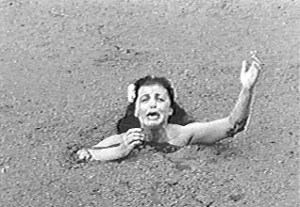Plot holes. We’ve all experienced them. Think of that moment in a cinema when you’re jarred from the film’s action by some detail that makes no sense to the story. It might be as small as a change in the character’s clothing from one shot to the next. Or the lighting is different—the shadows don’t match up with the sunset the characters are watching. What’s been motivating the character inexplicably shifts. Or there’s a twist that adds nothing to the story. No matter how small the detail, if it takes you out of the story, it’s a problem.
Filmmakers accept that plot holes are likely in their highly technical, collaborative endeavor. Most budget for a ‘continuity’ person, whose job it is to find these lapses in physical details, story logic and character motivation.
Unlike filmmakers, writers generally work alone. However, since producing a novel usually takes a long time, we are just as susceptible to plot holes. For those who start on page one and write sequentially through to the end, years may intervene. A lot can happen to alter our original vision. Most of us, of course, don’t write this way. We often work on the part that inspires us on a particular day, even if it happens to fall near the back end of the narrative. Or we might rework an early section that’s been ignored for months. Either way, there are endless opportunities for inconsistencies in the story.
How, then, do we keep the multitude of details in our minds and avoid those jarring plot holes?
One of the most basic steps is to know your characters. Depending on the type of writer you are, much of this will happen as the process unfolds. It’s a good idea to keep a separate record for each of your characters. In the early stages, sketch out a character’s physical and emotional qualities on an index card. Add motivations, personality traits, significant behaviour-shaping events, life goals. It’s fun to find photographs from magazines to attach to this fledgling dossier. Even if you veer from an exact likeness, perhaps the subject of a photograph reveals an attitude you want for your character—a steely gaze, or a tilt of the chin, an arrogant smile, or an expression of boundless sympathy. Pictures are also helpful in identifying possible habits, quirks, and foibles. The image of a birdcage from a home wares magazine might trigger the idea for a pet bird—one that happens to say embarrassing things at awkward moments. Or the picture of a spotless room may suggest to you that your character is a hopeless slob, unable to organize any aspect of her life (which perfectly explains her present predicament).
What begins as a few dot points on an index card may end up being a fat, colourful file—something that can bring you back to your original conception whenever you stray too far off course. Later on in the process, you might print out some of the more descriptive passages as they occur throughout the narrative. Do any discrepancies appear in the character’s physical appearance? Are there any unaccountable shifts in motivation? If the character is undergoing a psychological transformation, does this unfold coherently?
Another way to avoid plot holes is to do the proper research. In The little red writing book, Mark Tredinnick says we travel the arc from chaos to order whenever we write. One way to make the journey a smooth one is to be prepared for any question that might occur in the mind of the reader. The more familiar you are with technical information, the more clearly you will write about it and the less likely the reader will stumble. It helps to sketch the rooms your characters move around in: locate exits, windows, closets, furniture, steps they might trip over.
It’s important to find the right balance between showing and telling. Too much telling can deaden the narrative, pulling readers out of the story and into the present moment, prompting them to skip pages or stop reading altogether. Too much showing, on the other hand, can be exhausting. The reader is just as likely to be jolted from the story by having to make obscure connections, uncover clues, or act as a psychoanalyst.
Although a notebook is an essential tool for a writer, it has its shortcomings. Sometimes it’s important to view your ideas in other formats. It can be helpful—as well as a lot of fun—to create diagrams of intersecting characters and events on a giant sheet of butcher paper. Or create a timeline in which you track your subplots against your main plot. Does a subplot suddenly appear in Chapter 4 only to fizzle a few scenes later? Think of your story as a jigsaw puzzle with scenes sketched out and colour-coded on index cards and then arrayed on the floor in front of you. You might discover one of your main characters is ‘lost’ for a chunk of the narrative. Or that too much happens early on. Or the conflicts leading up to the climax don’t follow a logical sequence.
Awareness that plot holes are possible in any work of fiction is the first step in avoiding them. The effort you make to steer clear of these inconsistencies will not only make your story more coherent, it will also enrich the reader’s experience of your beautifully-crafted work.
Article first published in Writing Queensland in February 2011.

Love this. Going to have Sam read it to help him with his writing/filmmaking. Did you ever read Sue Monk Kidd’s memoir with her daughter – Traveling with Pomegranates? In one section she describes her collage process for developing the characters in the Secret Life of Bees (one of my favorite books) – great idea.
[…] Jones from Writing Fundamentals recommends such groundwork as knowing your characters, doing your research, and finding a balance […]
I like timelines for my characters. And lots and lots of editing to try to eradicate the holes. Nice post.